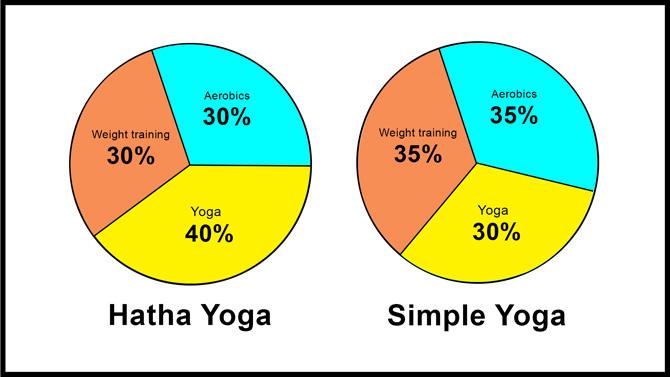The European Journal of Preventive Cardiology through a review of Yoga and cardiovascular diseases indicates that apart from helping one feel calmer and more balanced, yoga helps lower heart disease risk as much as conventional exercises

Representational Pic
Experts explain how pumping up with cardio and cooling down with yoga provides tripartite heart benefits.
ADVERTISEMENT
The European Journal of Preventive Cardiology through a review of Yoga and cardiovascular diseases indicates that apart from helping one feel calmer and more balanced, yoga helps lower heart disease risk as much as conventional exercises, such as brisk walking.
Yoga is long known to be more than just a stretch or breath, as it helps improve the flexibility of joints and increases core muscle strength, thus, in turn, improving one’s capacity of performing aerobic exercises like jogging, running, swimming, cycling, etc.
A very important criterion for determining one’s heart age is one's fitness level. Physical activity is of great importance in maintaining one's cardiovascular health. Maintaining optimal heart health involves:
1. Increasing muscle mass by weight training on alternate days.
2. Burning calories with aerobic exercises.
3. Keeping the mind and body supple with yoga.
“While cardio and weight training work to rev up your heart rate and build muscle mass, yoga, as a complementary practice can assist in preventing or managing heart disease. A combination of adequate weight training, aerobics and yoga work wonders in improving one’s heart health,” says Dr. Vijay D’silva, Director- Medical Affairs and Critical Care, Asian Heart Institute.
“All three go together and one cannot replace the other. Yoga helps as a supplementary practice and isn’t a replacement,” he adds.
Asanas such as the Padangusthasana (Big Toe Pose), Janu Sirsasana A (Head-to-Knee Forward Bend), Supta Padangusthasana (Reclining Big Toe Pose) and Setu Bandha Sarvangasana (Bridge Pose) are 4 poses that assist in maintaining one's heart health.
“For those who do active yoga such as hatha yoga- the split can be 40% yoga and 30 % of aerobics and weight training, while for those who perform simple yoga techniques, the split can be 30% for yoga and 35 % of the other two regimes,” says Dr. Santoshkumar Dora, Senior Cardiologist of the Asian Heart Institute.

Yoga, being applicable as a treatment to many conditions, this International Yoga Day, let’s look at how yoga’s benefits can now extend to one’s heart.
6 ways Yoga helps your heart :
It decreases stress hormones like cortisol and adrenaline that cause increased heart rate and blood pressure which is detrimental to the heart.
It helps decrease blood cholesterol counts.
7 hours of sleep is the minimum requirement for good cardiovascular health, yoga helps your muscles relax assisting one in acquiring sound sleep.
As yoga is less strenuous, it can be a good addition to cardiac rehabilitation, which can help people recover from a heart attack or heart surgery.
The Framingham Study was one of the first pieces of evidence to show that people with diabetes are more vulnerable to heart disease. Gentle muscle stretches while performing yoga makes the muscles more sensitive to insulin, helping control blood sugar, thus safeguarding your heart from diabetes driven heart disease.
In the case of smokers, considering the fact that smoking is one of the biggest factors of coronary artery disease, yoga is instrumental in helping smokers quit smoking.
 Subscribe today by clicking the link and stay updated with the latest news!" Click here!
Subscribe today by clicking the link and stay updated with the latest news!" Click here!






